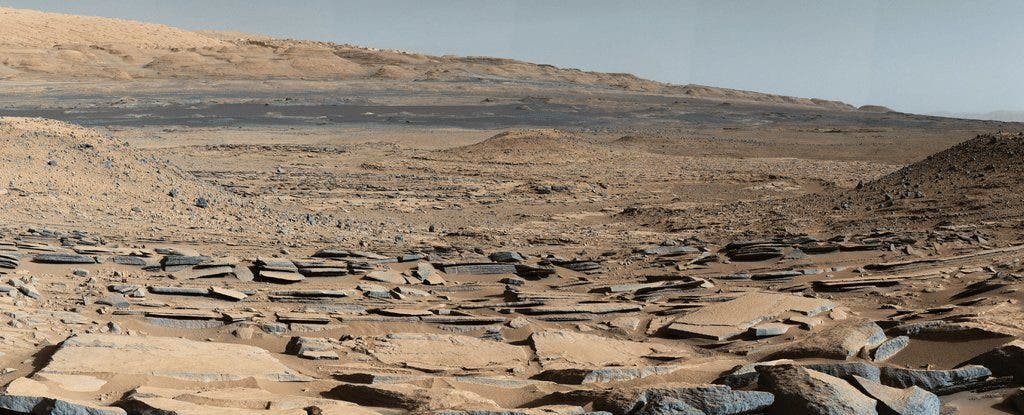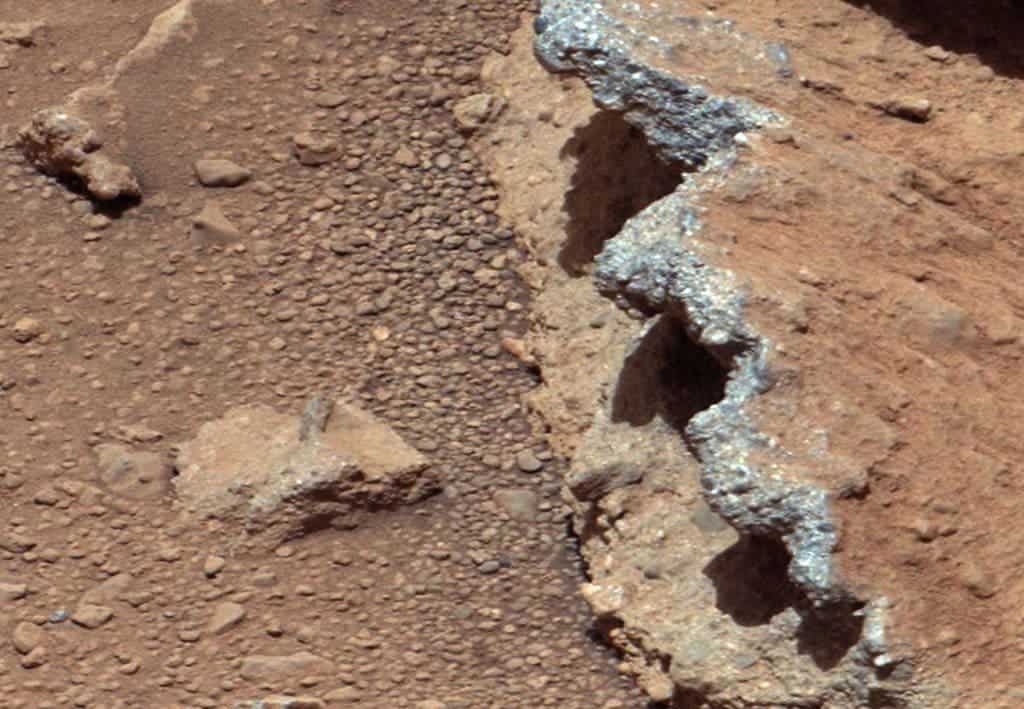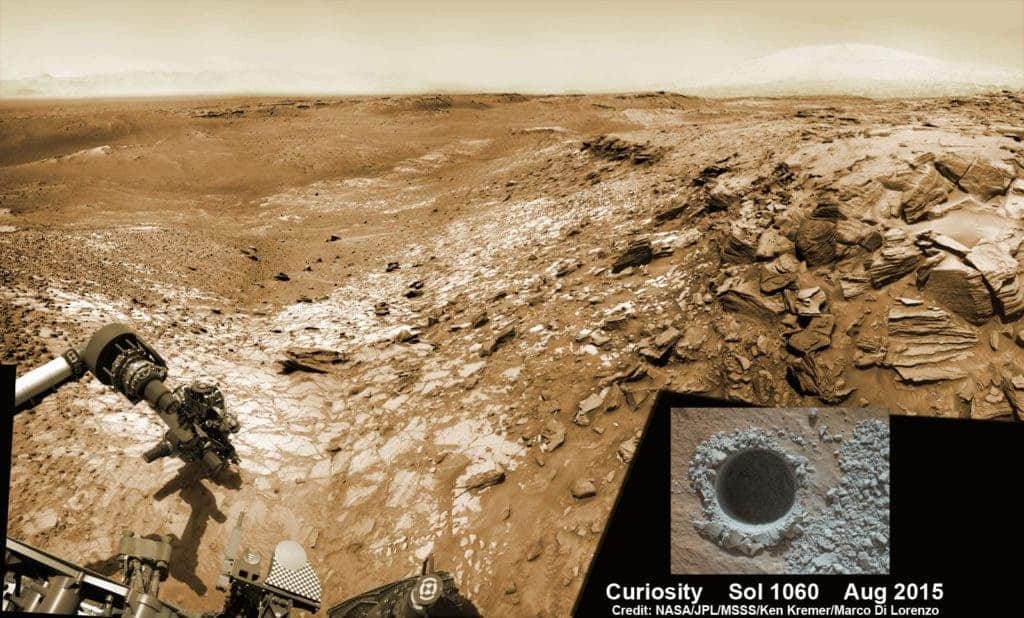Gale Crater could have supported life 3.5 billion years ago — and the Curiosity Rover is excellently placed to study it.

Looking at the photos taken by Curiosity, it’s hard to see Mars as anything else than a barren landscape. Yet study after study, we’ve learned that the Red Planet wasn’t always like this. Billions of years ago, it was a temperate, water-rich planet, and Gale Crater is a prime example of that past.
Gale Crater is a dried-up lake bed. The crater’s geology is notable for characteristics. For starters, it contains both clays and sulfate minerals, which form in water conditions, and may also preserve signs of past life. Gale also contains a number of fans and deltas which would have been excellent hotspots for ancient life on Mars.

Penn State researcher Christopher House says that Gale Crater would have had plenty of time to develop life.
“The water would have persisted for a million years or more,” he says. But the entire groundwater system lasted for way longer than that.
“The whole system, including the groundwater that ran through it, lasted much longer, perhaps even a billion or more years,” he said. “There are fractures filled with sulfate, which indicates that water ran through these rocks much later, after the planet was no longer forming lakes.”
But just because the planet may have had the right conditions to host life (which is in itself a debate) doesn’t necessarily mean that it did host life. This is why House and other scientists are looking for sulfate and sulfide minerals. If they wound find a mineral such as pyrite, for instance, this would indicate that the environment could have supported life.

House is also working in the sedimentology and stratigraphy team — which, as the name implies, studies how the rock layers on Mars formed. The goal is to understand the environment in which they formed, to better understand the geological evolution of our planetary neighbor.
“Missions like this have shown habitable environments on Mars in the past,” House said. “Missions have also shown Mars to continue to be an active world with potentially methane releases and geology, including volcanic eruptions, in the not too distant past. There’s definitely great interest in Mars as a dynamic terrestrial world that is not so different than our Earth as some other worlds in our solar system,” House adds.
However, working remotely via Curiosity is no easy feat. The brave rover has been going strong since August 2012 and despite some minor issues, it shows no signs of stopping, although it has long surpassed its original planned mission.

In its almost 7 years of activity, Curiosity has covered 20.73 km (12.88 mi). It might not seem like much to us, but every step of the way is carefully planned and analyzed. The day-to-day operations and scientific tests are planned with painstaking care and detail. Researchers need to carefully address all the information that’s presented to them and additionally, Curiosity has a limited amount of power.
“Each time we drive, we wake up to an entirely new field of view with new rocks and new questions to ask,” he said.
“It’s sort of a whole new world each time you move, and so often you’re still thinking about the questions that were happening months ago, but you have to deal with the fact that there’s a whole new landscape, and you have to do the science of that day as well.”
However, so far, the results have been extremely rewarding. Mars is not the boring, desolate environment we once thought it to be. Mars is a fascinating world, one that we’ve learned much about, we still have even more to learn. Is there — or was there — life on Mars? We don’t know yet. But in this case, the journey is just as exciting as the destination.
“Each time we drive, we wake up to an entirely new field of view with new rocks and new questions to ask,” he said. “It’s sort of a whole new world each time you move, and so often you’re still thinking about the questions that were happening months ago, but you have to deal with the fact that there’s a whole new landscape, and you have to do the science of that day as well,” House concludes.


